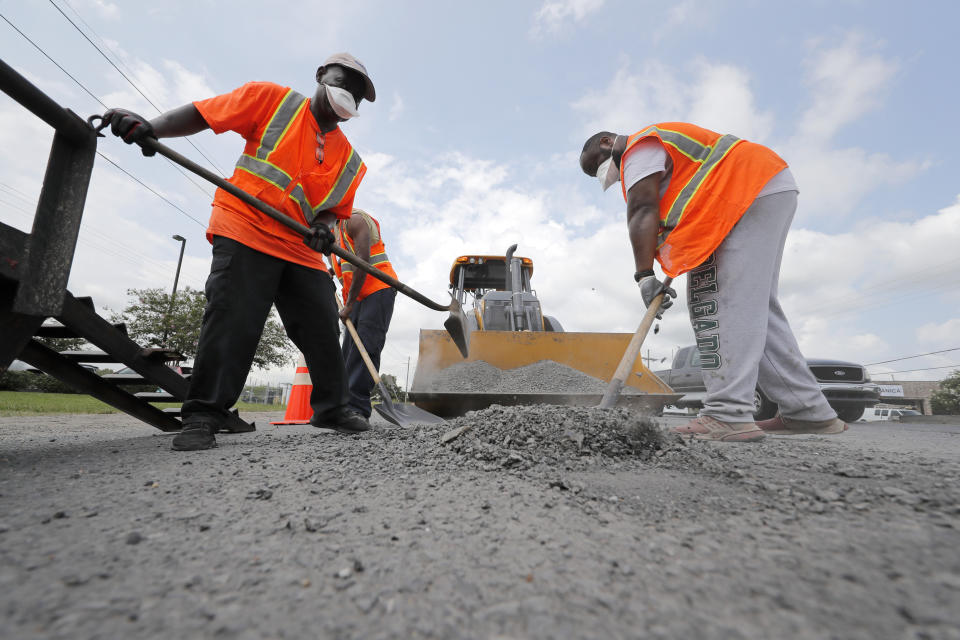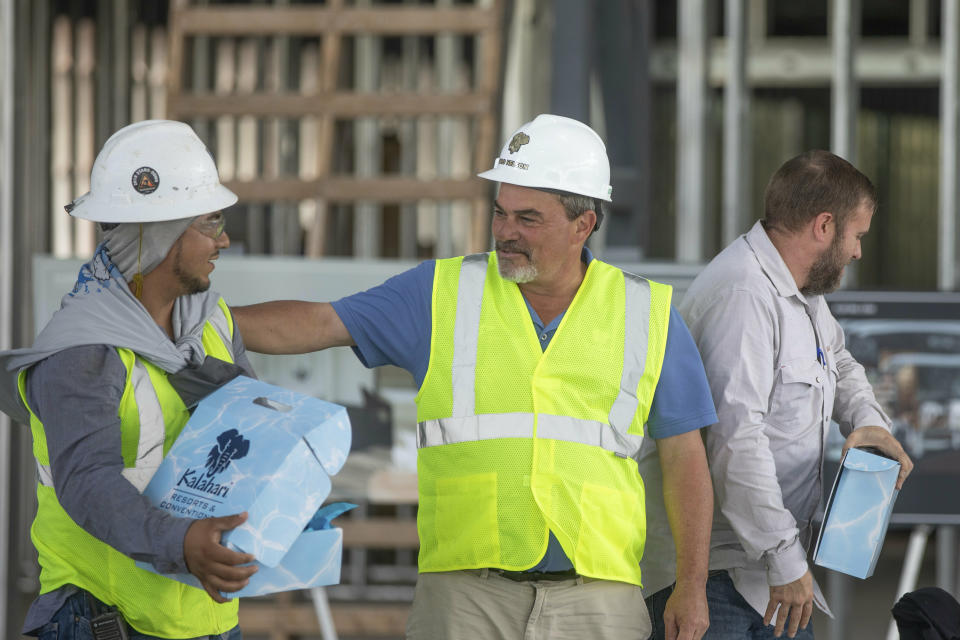The U.S. construction industry is facing 'a uniquely post-Great Recession experience'
Since the Great Recession, the U.S. has seen a major shortage of workers in the construction industry.
“The labor shortage, specifically in the residential construction side, has been kind of a uniquely post-Great Recession experience,” Rob Dietz, Chief Economist at the National Association of Home Builders, told Yahoo Finance.
The construction industry lost approximately 1.5 million jobs during the financial crisis, according to FRED data. The industry has not yet gained back those jobs, with Dietz describing it as a “sluggish process.”
“The JOLTS data says we’re short about 350,000 workers,” he said. “The skilled labor shortage has gotten progressively more challenging as this lengthy growth cycle has continued. The impacts of it are … how long it takes for an individual homeowner to access a remodel, or how long that project will take. Those duration times have gone up.”

‘A whole set of limiting factors’
Dietz said “there’s a whole set of limiting factors” for the construction industry over the last 10 years.
Dietz refers to these factors as the five L’s in building: lack of labor, lack of lots, lack of lending for builders and land developers, lumber and material issues, and law issues.
“The economic impact is the fact that we’ve got a housing deficit,” Dietz said. “I think that’s fairly clear. The housing deficit means a shortfall in inventory, which has resulted in home prices going up faster than incomes and faster than inflection.”

He added: “We calculate about a billion-unit deficit between apartments and single family homes, combine. And it’s contributed to the housing affordability prices. The fact that home prices have continued to outpace income growth, inflation growth. Inventory has been so tight, and the key reason for that has been the labor shortage.”
Part of the challenge is also demographics, with Baby Boomers becoming older.
“The aging existing workforce, which took an enormous hit during the Great Recession with people losing jobs, in some cases leaving the industry and not wanting to come back, means that we really have this large deficit of skilled labor,” Dietz said.
Then, there are the millennials, who are becoming more and more college-educated.

“Surveys that we’ve done of young adults, 18-25, construction doesn’t fare very well in terms of an intended career,” Dietz said. “You see stronger attachment to wanting jobs that are less seasonal, less physical, that are in office environments behind screens. That’s a consequence, I believe, of the fact that we’ve got a much greater fare of people going to four-year universities today than we did 30, 40, 50 years ago.”
Wages may play a small role in the lack of available workers. According to Bureau of Labor Statistics (BLS) data, the median annual wage for construction workers in May 2018 was $34,810.
“The wages have increased generally faster than inflation, although one criticism I often see is … wages should be rising faster if this was a more intense labor shortage,” Dietz said. “That completely misses the actual decision making that’s undertaken by these small firms.”
‘Immigration has had an impact’
Another factor in the construction shortage are changes in immigration policies.
According to a note from Goldman Sachs, the U.S. labor force has grown by almost 30% since 1990 and immigrants account for about half of the net increase. Furthermore, out of all major occupations, construction and extraction has the highest number of foreign-born workers.
“Admittedly, there’s been a slowdown in immigration,” Dietz said. “If you talk to individual markets, particularly in markets where that share is high — Florida, Texas, California, Arizona — they’ll say the slowdown in immigration has had an impact on the availability of labor. But the fact that the share has ticked up a little big suggests there are two factors at play, and I think you’ve got to give equal weight to both.”

“One is the slowdown in immigration — construction, traditionally, going back to the mid-1800s, has been an important source of employment for immigrants,” Dietz said. “The other factor, though, is we are having difficulty in the construction industry attracting that native-born American population. Getting young people coming out of high school.”
Another problem that has arisen, particularly within the construction industry, is the opioid crisis.
“I grew up in Dayton Ohio … Montgomery County is right next door,” Dietz said. “It was really sort of ground zero for the opioid issue. It’s had impacts on that local labor market. I do think it’s had an impact.”
Yahoo Finance previously reported on a note from Barclays Research, which found that construction workers are nearly six times more likely than other industries to develop an opioid addiction. “In Massachusetts,” the analysts noted, “~25% of all opioid overdose deaths were from construction.”
“I travel every week and I get out and talk in front of builders, remodelers, lumber yard dealers, and equipment leaders, and I do hear it,” Dietz said. “If I had to guess, it’s somewhere between 1 in 10 or 1 in 5 [businesses affected]. It’s not like every single firm has had to deal with this.” He cited a paper that “found a really strong correlation with disability claims and an even stronger correlation with disability claims linked to opioid abuse.”
And a study from the Cleveland Fed concluded that “prescription opioids can account for 44% of the realized national decrease in men's labor force participation between 2001 and 2015” and a 17% decline for prime age women.
‘No silver bullet’

With no one clear cause of this shortage, but rather a confluences of several issues, “there’s no silver bullet” to how to fix it, Dietz explained.
“It’s going to be a combination of recruiting new people into the industry, people who can become skilled tradesmen and ultimately, small business owners,” he said. “And it’s also going to need investment in innovative technologies, processes, by which we can raise productivity...
“If you travel anywhere, you see people spending time, resources, money, working with schools to really address what is really a real macro risk for the U.S. economy,” Dietz added. “If we face this kind of skilled worker shortage, it will have impacts on growth in the future.”
Adriana is an associate editor for Yahoo Finance. Follow her on Twitter @adrianambells.
READ MORE:
U.S. Construction CEO: 'We're going to need more skilled workers'
Construction industry 'is still dealing with the ramifications' of the financial crisis
Read the latest financial and business news from Yahoo Finance
Follow Yahoo Finance on Twitter, Facebook, Instagram, Flipboard, SmartNews, LinkedIn, YouTube, and reddit.

 money
money 
